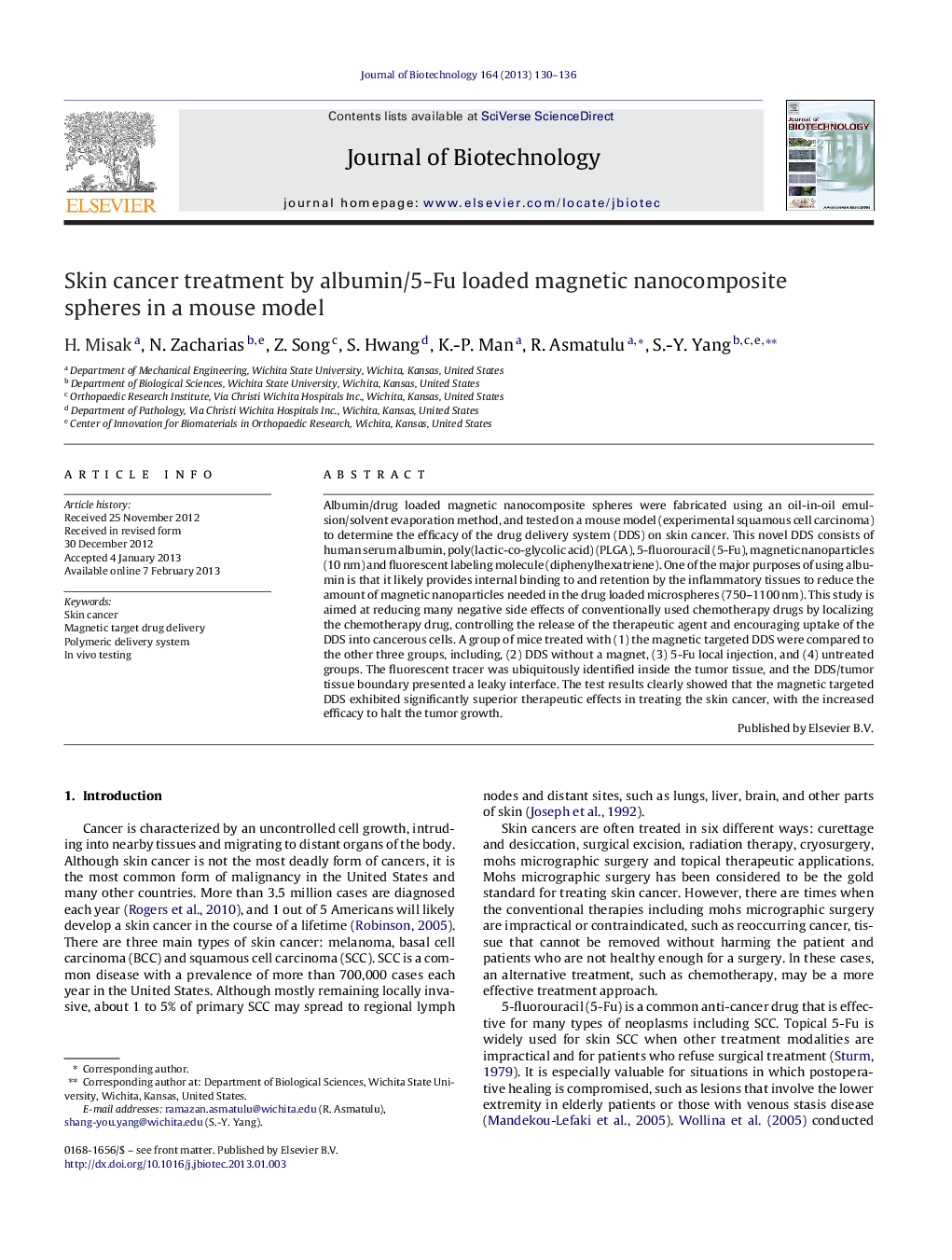| Article ID | Journal | Published Year | Pages | File Type |
|---|---|---|---|---|
| 23571 | Journal of Biotechnology | 2013 | 7 Pages |
Albumin/drug loaded magnetic nanocomposite spheres were fabricated using an oil-in-oil emulsion/solvent evaporation method, and tested on a mouse model (experimental squamous cell carcinoma) to determine the efficacy of the drug delivery system (DDS) on skin cancer. This novel DDS consists of human serum albumin, poly(lactic-co-glycolic acid) (PLGA), 5-fluorouracil (5-Fu), magnetic nanoparticles (10 nm) and fluorescent labeling molecule (diphenylhexatriene). One of the major purposes of using albumin is that it likely provides internal binding to and retention by the inflammatory tissues to reduce the amount of magnetic nanoparticles needed in the drug loaded microspheres (750–1100 nm). This study is aimed at reducing many negative side effects of conventionally used chemotherapy drugs by localizing the chemotherapy drug, controlling the release of the therapeutic agent and encouraging uptake of the DDS into cancerous cells. A group of mice treated with (1) the magnetic targeted DDS were compared to the other three groups, including, (2) DDS without a magnet, (3) 5-Fu local injection, and (4) untreated groups. The fluorescent tracer was ubiquitously identified inside the tumor tissue, and the DDS/tumor tissue boundary presented a leaky interface. The test results clearly showed that the magnetic targeted DDS exhibited significantly superior therapeutic effects in treating the skin cancer, with the increased efficacy to halt the tumor growth.
► A targeted DDS was developed that incorporates albumin, PLGA, 5-Fu, and magnetic nanoparticles. ► The study is aimed at reducing negative side effects of conventionally used chemotherapy drugs. ► The DDS localizes, controls the release, and encourages uptake of the therapeutic agent into the cancerous cells. ► The test results showed that the targeted DDS increased the efficacy in treating skin cancer.
